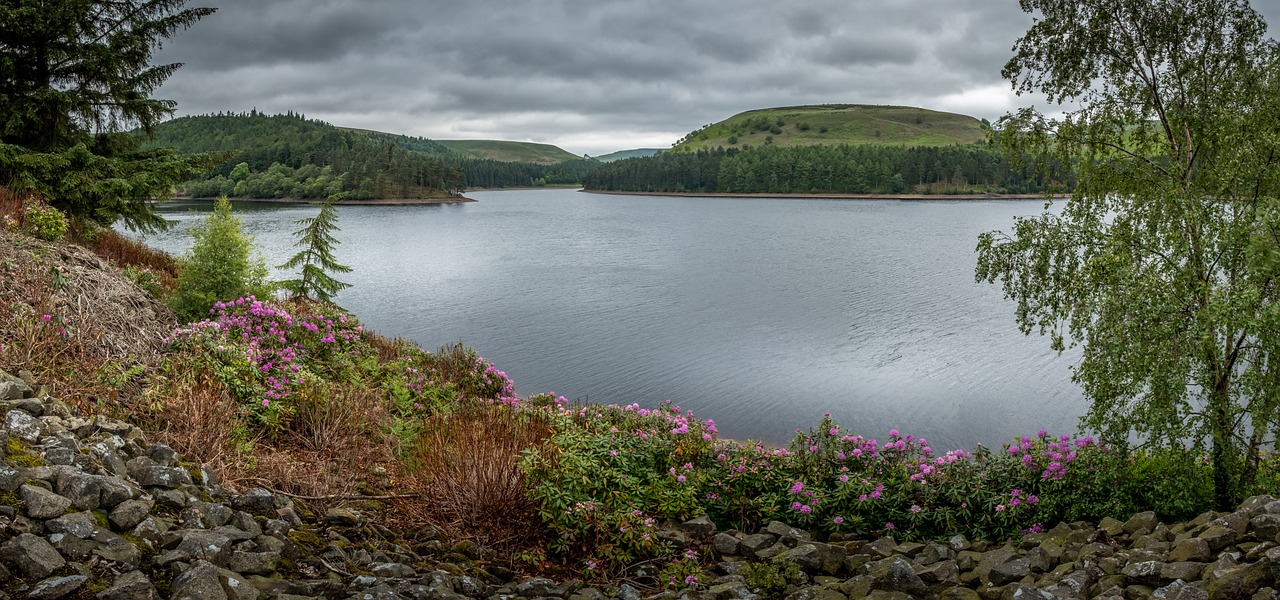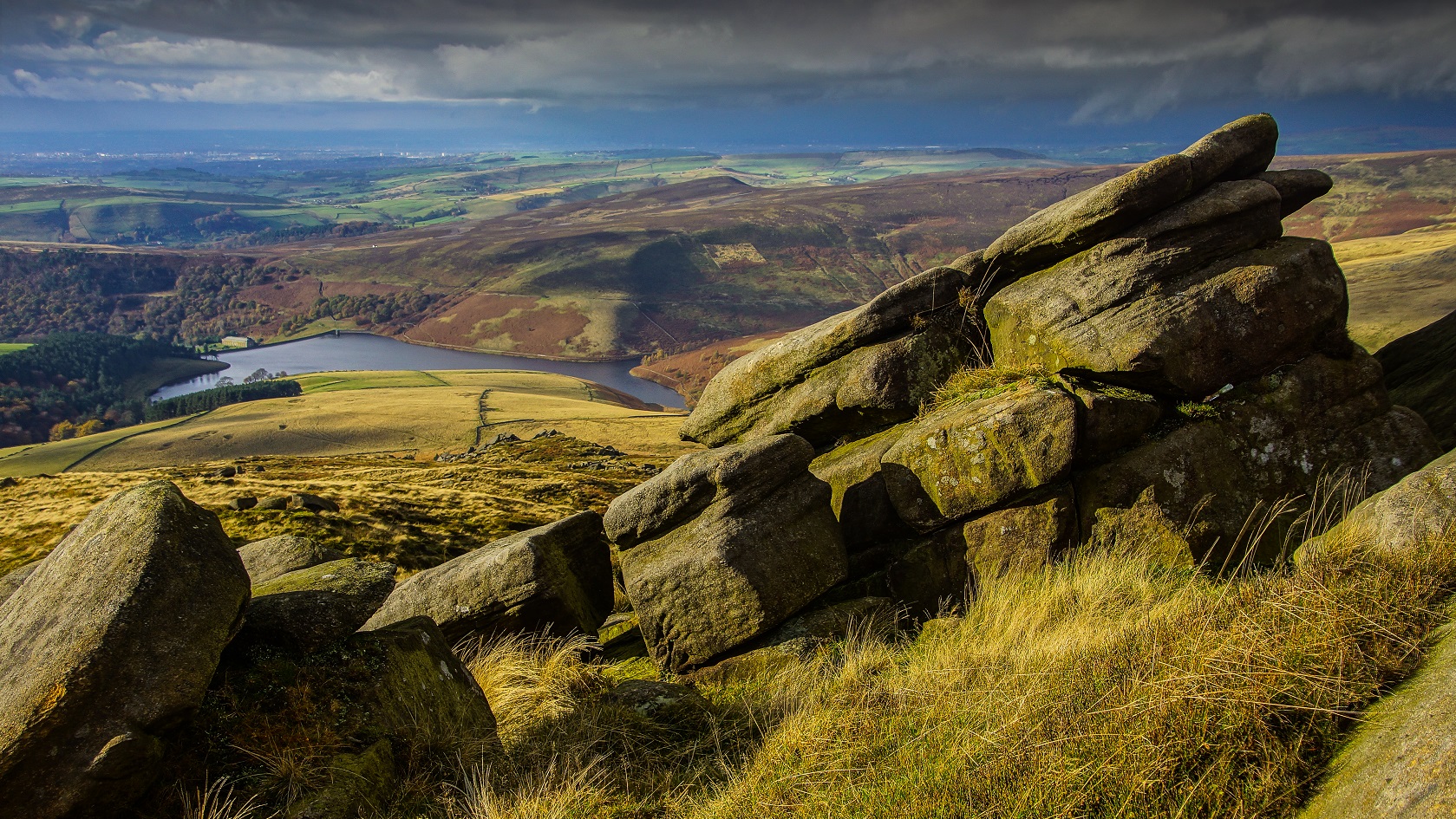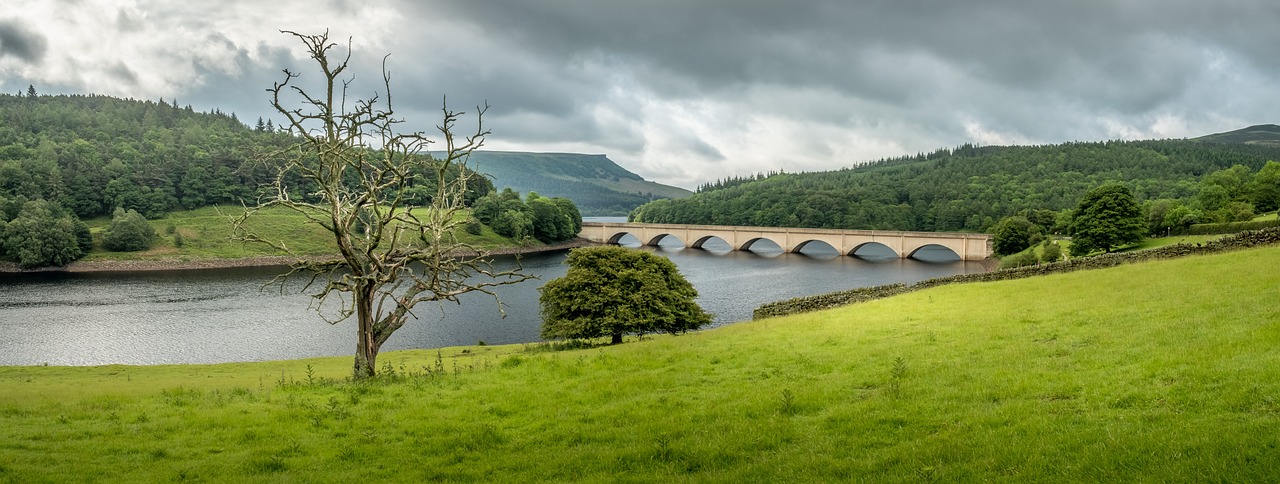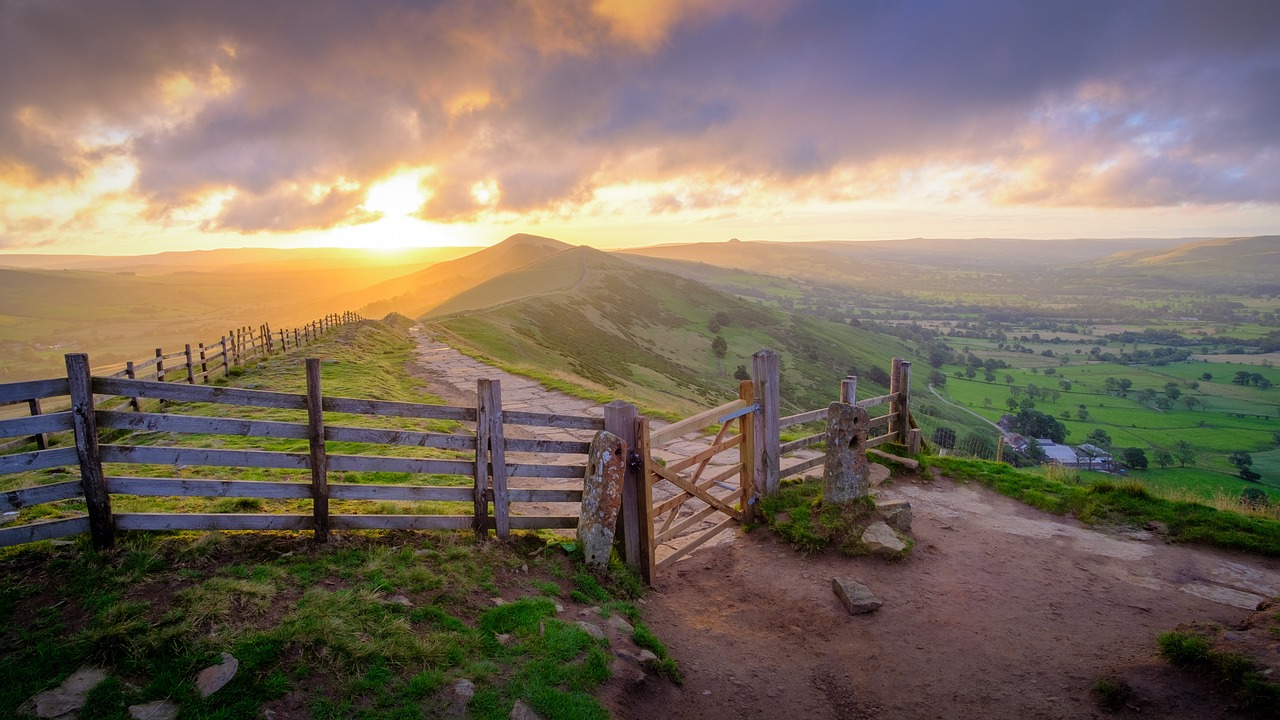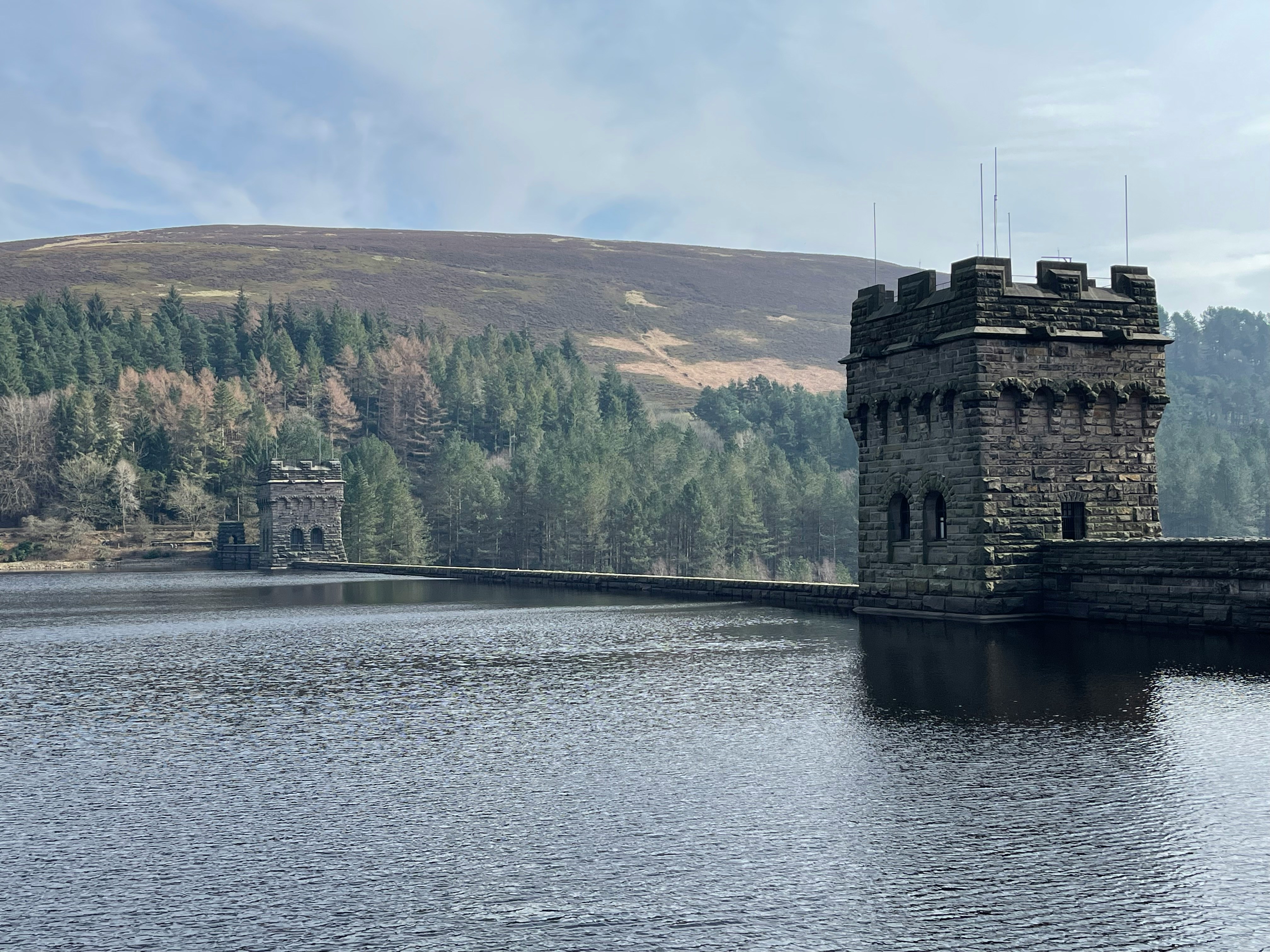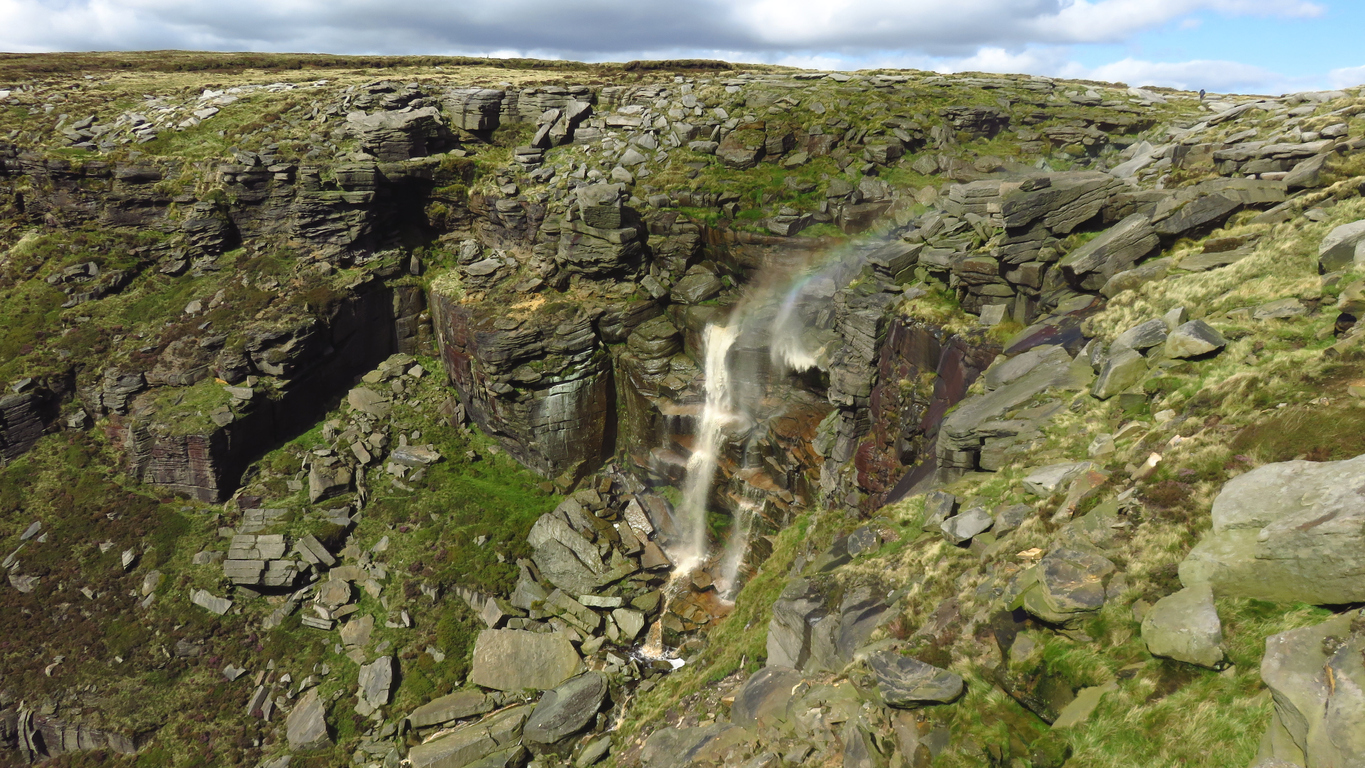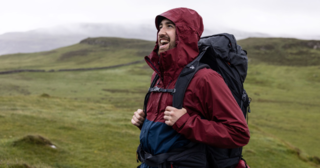The Peak District National Park is one of the UK's most loved national parks. Covering 555 square miles of Derbyshire, Staffordshire, Cheshire, Greater Manchester and South and West Yorkshire, it attracts over 10 million visitors per year. The Peak District National Park was founded in 1951, making it the UK's first national park. Its establishment paved the way for all subsequent UK national parks in Wales and Scotland. Those looking for a Peak District National Park map can find detailed information at the official website peakdistrict.gov.uk.
The Peak District landscape was shaped during the last ice age, leaving behind the rocky outcrops, rolling hills and meandering valleys so quintessential of the Peak District scenery. The northern area is known as the Dark Peak, characterised by wild moorland plateaus, gritstone escarpments and peat wetlands. The southern area is the White Peak, with its limestone dales and meandering rivers. Despite the name, the landscape is by no means bleak. Picturesque villages with cosy cottages dot the park and there are over 1,900 listed buildings reflecting a rich cultural heritage. Walkers are also treated to ever-changing vistas over hills, dales and moors filled with colourful wildlife.
Unique Geology of the Peak District
The Peak District National Park landscape owes its unique beauty and biodiversity to its geology. While the gritstone and shale of the Dark Peak have weathered slowly over time, the limestone of the White Peak is constantly evolving into new formations through dissolution. This has resulted in deep caves, underground streams and gorges as surface rivers cut down vertically.
One of the most spectacular examples is the limestone gorge at Cressbrook Dale, carved out by the meandering River Wye. Nearby Litton Mill stands testament to the river's unrelenting force, its 18th-century cotton mill site demonstrating how the river’s course has changed dramatically over a short timeframe. Another key landmark is Thor’s Cave, a fascinating natural cavern with an impressive 7-metre-high entrance. Formed thousands of years ago by an underground river, it provided shelter to ancient man and continues to inspire legend today.
Underground streams have also created a vast network of caves and potholes beneath the White Peak landscape, popular spots for experienced potholers. Peak Cavern in Castleton is one of the largest cave systems, while the 30-metre-deep Devil’s Arse includes Britain’s tallest free-standing underground pillar. Growing stalactites and stalagmites add to the spectacle. These ever-changing geological processes may occur slowly, but they make the Peak District National Park landscape unique.
Walking and Hiking Trails in the Peak District
As one of Britain’s best walking destinations, the Peak District National Park offers high peaks, panoramic views, and peaceful lowland trails. With its diverse landscape encompassing everything from open moorland to sheltered dales, walkers can choose hikes based on distance, duration and terrain. Short walks cater for families and first-timers, while seasoned ramblers and peak-baggers will discover lifelong routes crisscrossing high gritstone edges or linking ancient landmarks across rolling countryside. Here are some of the best walks in the Peak District:
- Kinder Scout Trail - This challenging 9-mile circular walk reaches the highest point in the Peak District at 636m, crossing a rugged moorland plateau that connects to Bleaklow Hill and the famous Kinder Trespass route.
- Mam Tor Trail - This dramatic 5-mile circular walk ascends the steep 'Shivering Mountain', taking in remains of medieval fortifications and panoramic views across the Peak District.
- Stanage Edge Trail - A 4-mile walk along an impressive gritstone cliff edge towering 233m over the Hope Valley, with stunning views from the rocky outcrops that make it popular with climbers and scramblers.
- Dovedale Circular Walk - A family-friendly 6-mile loop following the idyllic scenery along the River Dove through ancient woodlands and over packhorse bridges.
- Limestone Way - A challenging 50-mile walk linking Matlock and Rocester, winding through the Dove and Manifold river valleys and connecting Peak District villages and historic sites.
- Monsal Trail - An easy 8.5-mile walk on a flat, gravelly former railway line with old tunnels and viaducts, ideal for walking or cycling.
Wildlife and Habitats in the Peak District
As Britain’s first national park, the Peak District landscape safeguards endangered habitats and species. Its mosaic of gritstone moors, flower-rich limestone meadows, wooded valleys and gorges supports an abundance of flora and fauna. From birds of prey hovering above heather moorland to mountain hares darting between rocky outcrops, a diversity of wildlife can be spotted across the seasons.
The Dark Peak’s high ground and blanket bogs create perfect habitation for ground-nesting birds. Curlew, golden plover, dunlin, twite and short-eared owl breed on the same moorlands they have for centuries. Red grouse can also be spotted here year-round, as well as peregrine falcon and merlin which populate gritstone edges. Reservoirs attract migrating geese in winter, while summer draws Lapwing, oystercatchers and common sandpipers to breed.
In the White Peak, flower-rich limestone meadows burst into colour in summer with harebell, thyme and ladies' mantle. Sheltered dales cloak charming villages, with nooks and crannies perfect for roe deer and weasels. Badgers occupy setts on wooded valley slopes alongside foxes, stoats and hedgehogs. Rivers and streams welcome dippers and kingfishers, while grasslands filled with yellow rattle and orchids entice hares and harvest mice. Every corner of the Peak District National Park supports specially adapted wildlife.
Historical Attractions and Sites in the Peak District
As well as enjoying the Peak District’s spectacular scenery, visitors can discover a colourful history through its stately homes, industrial sites, castles and historical attractions. From medieval ruins to grand 18th-century houses, sites of national significance tell stories spanning British history.
Peveril Castle has overlooked Castleton since the 12th century, originally built by Henry II. Later a Crown possession, its keep and ruins illustrate 700 years of architectural adaptations. From the English Civil War to its use as a prison, its tales chronicle social history. Nearby Peak Cavern hides an even older secret - evidence of Britain’s oldest rope-making enterprise dating to the Iron Age. Industrial sites also now attract tourism, like Magpie Lead Mine and the Derwent Valley Mills complex.
Stately homes also attract interest, including Chatsworth House - ancestral home to the Duke and Duchess of Devonshire. This ‘Palace of the Peak’ offers insights into both aristocratic and servant life over 4 centuries. Haddon Hall too remains occupied by the Manners family 900 years after construction. Explore parapets, towers, the Long Gallery and terraced gardens. Or discover Lyme Park’s medieval origins, remodelled into an elegant Italianate palace. Visitor attractions thus unlock incredible heritage.
Outdoor Activities and Adventure Sports in the Peak District
Outdoor activity goes hand-in-hand with a Peak District holiday thanks to its diversity of landscapes. With crags to climb, cycle trails to conquer caverns to explore and some of England’s best walks, the national park delivers adventure in abundance. From family days out to extreme sports weekends, pure adrenaline or relaxed enjoyment can be found across the seasons.
- Cycling - Miles of trails like the Monsal, High Peak and Tissington Trail cater for mountain bikers, road cyclists and families through varied terrain including gentle slopes or challenging climbs up the Peak passes.
- Climbing - The iconic gritstone cliffs of Stanage and Millers Edges have routes scaling over 233m in height to challenge climbers of all abilities and offer panoramic views.
- Caving - Peak Cavern, with its impressi.ve gorge entrance, and the complex Titan-Speedwell system provide exciting underground trips through spectacular caverns and challenging narrow passages.
- Gorge Scrambling - Limestone gorges like Lathkill Dale offer adrenaline-pumping scrambles through plunging ravines carved out by rivers over centuries.
- Canyoning - Abseil, climb and float along steep rock faces and cave systems with Peak District canyoning adventures, exploring the natural architecture from new dizzying angles.
- Go Ape - Fantastic high ropes courses hidden in trees, with zip wires, Tarzan swings and suspended obstacles to tackle at this outdoor action adventure centre.
Peak District Waterfalls
The Peak District is home to some of Britain’s most impressive waterfalls cascading through wooded gorges and over limestone cliffs. The fast-flowing rivers carve out steep-sided gullies and plunge over rock edges creating spectacular torrents of white foaming water.
Some of the most stunning waterfalls are Kinder Downfall, the highest in the Peak District, which plunges 30 metres creating dramatic scenery as it cascades over rocky outcrops. Its circular walking trail allows visitors to marvel at its power and beauty from below and above. Equally as impressive is Dove Dale's Thorpe Cloud waterfall, emerging mysteriously from an underground cavern beneath the limestone cliff. Its foaming waters and thunderous roar amply reward those who follow the gorge trails to its secret source. For more peaceful scenery, Lathkill Dale, Ashopton Viaduct and Hardraw Force waterfalls make idyllic backdrops to walking routes through verdant forests and fern-fringed pools. Their gently flowing waters and shorter dropping heights create relaxation. Whether boasting crashing torrents or peaceful ambience, these waterfalls encapsulate the Peak District's scenic landscapes.
Several waterfalls allow easy access for family days out. Kinder Downfall's 1-mile circular trail starts from a parking area, treating visitors to views of its 30-metre cascading torrent. Equally accessible is Hardraw Force, with a countryside pub situated beside its woodland walkway. Watching its waters tumble gently over limestone makes for a refreshing stopover. For more adventurous hikes, Ashopton Viaduct rewards over 3 miles of remote moorland rambling with a beautifully framed glimpse of it plunging into a wooded valley. Or witness the power behind 70-foot high Low Force after a walk through Summer Lodge estate. With such diversity, from secluded to straightforward access, Peak District waterfalls have something for everyone. Their scenic backdrops make every effort to make them worthwhile.
Accommodation Options in the Peak District National Park
Accommodation choices in the Peak District range from cosy cottages in sleepy villages to contemporary lodges on working farms to hotels in historic halls and manor houses. Options suit every taste and budget. For families, cottages offer convenience with dining areas, private gardens and often an extra playroom. Characterful village inns also offer rooms full of original beams, four poster beds and views over the peaks.
For larger groups seeking exclusive use, Arborlow Country House offers an ideal retreat with accommodation for up to 24 guests across 12 bedrooms. Its snooker table, private cinema, sauna and outdoor hot tub provide onsite entertainment, while the spacious home hosts celebration dinners or parties effortlessly. The grounds and gardens also lend themselves to outdoor games for both children and adults alike. Alternatively, Baslow Hall provides all the luxury of a country house hotel stay. Guests can indulge in its fine dining offerings, including a Chef’s Table experience in the kitchen. The spa, with its hydrotherapy pool, delivers relaxing pampering while the cookery school hosts bespoke classes. Boutique room styling completes the elegant atmosphere. Nearby, The Cavendish Hotel merges country-chic interiors with fine dining for a sophisticated yet friendly ambience.
For more contemporary lodges, guests can embed themselves in nature without forgoing modern comforts. Upper Farm’s eco-lodges run entirely on renewable energy, perfect for families to unwind with nature trail walks just outside. At Peveril of the Peak, holiday lodges overlook the countryside while offering direct access to on-site climbing, abseiling and archery to satisfy adventure lovers. Or balance historical charm and contemporary style at Lea Hall Cottages, set on a working cattle farm with beautifully converted cowsheds retaining original beams and dairy features. Choices suit groups, couples or solo holidaymakers.
Most visitor attractions, villages and trails remain reasonably accessible from any base. However stunning Hope Valley delivers scenery, history and central access for walking Kinder Scout or Stanage Edge. Nearby Castleton and Edale village appease peak baggers ascending Mam Tor too. Market towns Bakewell, Buxton and Matlock offer more amenities being public transport hubs. Whatever your hopes for a break in the Peak District National Park, the accommodation choices will support special memories.
Related Articles

Let us know you agree to cookies
We use marketing, analytical and functional cookies as well as similar technologies to give you the best experience. Third parties, including social media platforms, often place tracking cookies on our site to show you personalised adverts outside of our website.
We store your cookie preferences for two years and you can edit your preferences via ‘manage cookies’ or through the cookie policy at the bottom of every page. For more information, please see our cookie policy.
